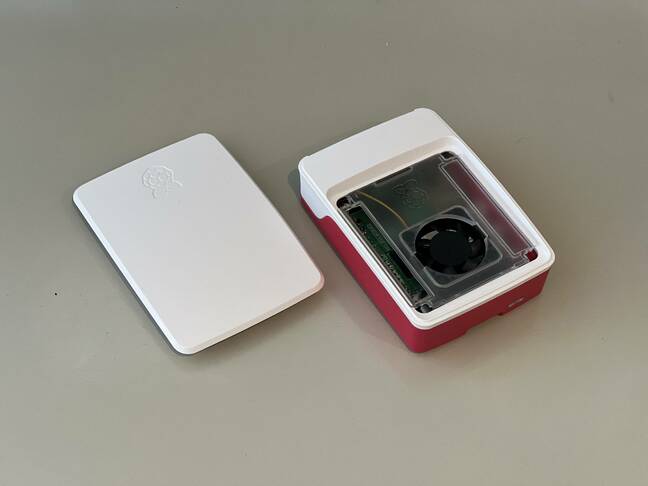Raspberry Pi 5: Hot takes and cooler mistakes
How does the device fare as a daily driver, and is cooling really optional?
We've used a pair of Raspberry Pi 5s as daily drivers and have some hot takes. Some really hot takes.
Why two devices? The first exhibited some mysterious lock-ups as it heated up – we ran it without any cooling solution, so you don't have to – and it was subsequently returned to base for investigation. The second has performed faultlessly.
The Raspberry Pi 5 was announced at the end of September. Unlike previous models, it uses in-house silicon designed by the Raspberry Pi team. It runs substantially faster than earlier iterations and has gained some new features and dropped others.
It also puts out quite a bit of heat if you try running it without a cooling solution, although the official line from Alasdair Allan, head of documentation at Raspberry Pi Trading, is: "Adding cooling is entirely optional."
With the approach of winter in the UK, running a Pi 5 without a cooler might have a certain... appeal for those with central heating issues at home. However, our recommendation for day-to-day productivity tasks remains: if you want to run it without a case, invest in the Active Cooler for a shade under £5 ($6). You don't have to connect the blower, but you probably will.
If you want a case from the Raspberry Pi gang, just under £10 ($12) will get you the latest design of the red and white plastic clip-together affair that has been a familiar accessory for Pi users over the years. The fact that this incarnation includes a fan is another hint that the Pi team is taking cooling seriously.
The Pi 5 case is a neat bit of design. The old case worked well until the Pi started getting warm under load – we're looking at you, Pi 4 – yet the new one features better ventilation and, of course, a built-in fan.
As before, the case clips together and, despite the fan's connection to the Pi, the hardware remains accessible. The GPIO pins are available, and a HAT can be accommodated using a header extender or spacer.
The clear plastic panel in which the fan is mounted can also be removed if needed – useful for replacing a moving part – and the fan is of the variable speed variety. It is relatively quiet when active, although we found the blower on the Active Cooler still softer. It does, however, produce an audible hum when running.
Load up the Pi – we used stress – and the fan ramps up accordingly as the temperature rises. As the RPM increases, so does the noise. In our testing with the Pi 5 case, we found the fan would spin up when the temperature reached 50°C (122°F) – using Chromium for some productivity work, for example – but at a relatively benign 1,250 RPM.
- Kaluma squeezes JavaScript onto the Raspberry Pi Pico
- Raspberry Pi 5 revealed, and it should satisfy your need for speed
- Tinker Tailor Soldier Pi? Asus's 'NUC-sized' SBC aims to out-Pi the Raspberry
- Raspberry Pi production rate rising to a million a month
Increase the workload, and the fan noise swiftly becomes noticeable. A few minutes of stress sent the temperature beyond 65 degrees and the speed of the fan ramping up. Drop the workload, and the fan spins down simultaneously.
We ran the Pi 5 without a cooler, with a passive cooler, and with a fan for a few weeks as a daily driver. Aside from the odd lock-ups we encountered with our first unit when running without any cooling solution – our second unit has had no such issues – the Pi 5 is a very usable device.
Even when CPU throttling began kicking in at around 80°C (176°F) – with no cooling solution attached – performance remained perfectly acceptable for day-to-day productivity work. A passive cooler meant the Pi 5 took longer to reach its thermal limits. Using a fan – or blower – kept the temperature to around 65°C (149°F) regardless of workload.
As for the issues we encountered with our first unit, Raspberry Pi CEO Eben Upton told The Register: "This is the first time, across our internal testing and a pretty broad beta, that we've seen someone lock up a unit in this way."
We're special like that.
The Raspberry Pi team has since given the device a thorough workout, and although no gremlins have made themselves known, there is always the possibility of a firmware update should anything crop up as the hardware hits the channel.
Upton said: "Like all modern products, I'm sure we'll be updating the firmware for a long time. We are still updating the firmware for Raspberry Pi 1."
Overall, the case is a well-designed accessory for the Pi 5, and the fan is both an acknowledgment and a lesson learned from the Pi 4 that, yes, it can get a bit hot. While the official line is that cooling is optional, our experience is that it is a good idea.
Particularly if you're going to throw the odd heavy workload its way.
Or are a very unlucky vulture. ®

 Biting the hand that feeds IT
Biting the hand that feeds IT